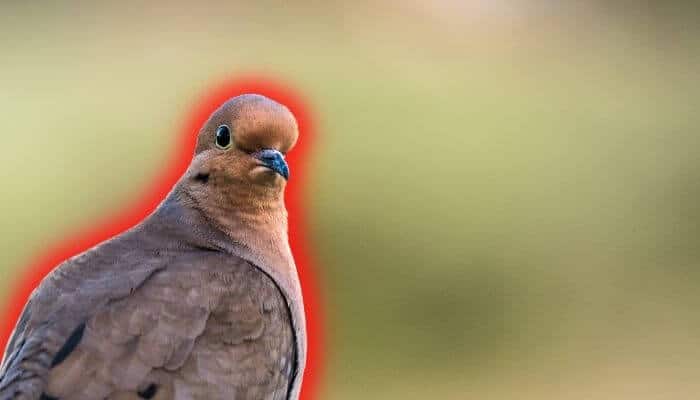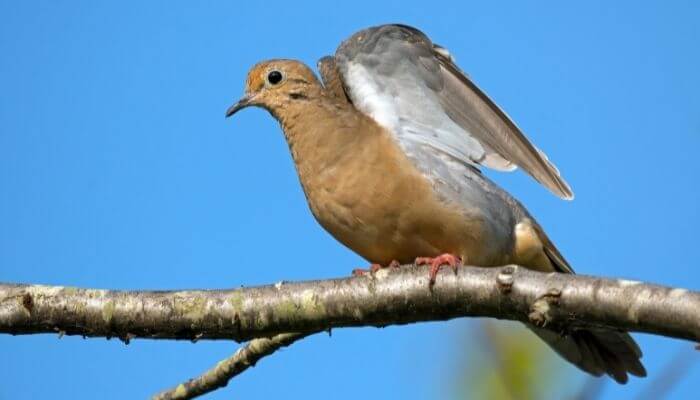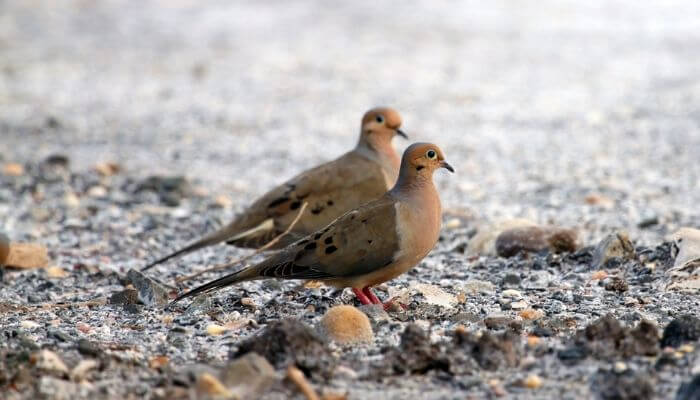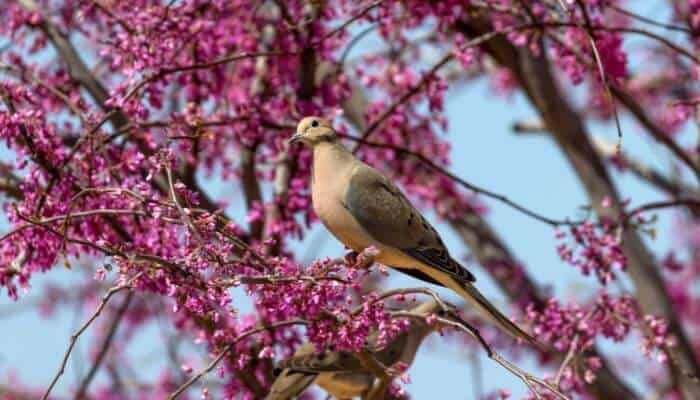Generally, mourning doves are quite peaceful but under certain circumstances will become aggressive.
Circumstances where they may be aggressive include:
- Defending territory
- Breeding season
- Protecting a food source
The Mourning Dove
One of the most common birds in North America, the mourning dove is a medium-sized breed of pigeon. Its favored habitat is open country with areas of woodland where they can roost.

They are known mainly for their sheer numbers, their cry which gives them their name, wing whistling and also, they do have a unique way of rain bathing and sunbathing.
They are a game bird that can be hunted for sport or to eat under license during the season.
Dove hunting as well as their natural character makes them skittish, wary and easily startled birds.
They will however react to situations and display aggression.
Territorial Defence
A male mourning dove has the potential to become very aggressive when it is in the situation of defending territory that it has claimed as its own.

The male dove will display this aggression by puffing up its neck and hopping in fast pursuit of the birds that it feels are encroaching too closely into its chosen space.
This is a very natural tendency that the vast majority of birds exhibit when they feel threatened by a potential intruder, so in this sense, the aggression of a male mourning dove when defending its territory is very expected and very common among birds of all kinds.
Breeding Season
Male mourning doves are persistent in competing for the attention of their chosen female and can be quite macho.
As mourning doves mate for life, it is not uncommon that the male will be antagonistic and aggressive toward other males who may be vying for a female’s attention.

Seeing two males chasing a single female is quite a common sight where males haven’t yet paired up. Single males will also attempt to continue the chase even after a female has made her choice of the other bird.
After mating, there will be aggressive behaviour if the dove feels the nest is being threatened in any way, especially if there are eggs or hatchlings.
A female dove will also take an aggressive stance in these circumstances. This is a common behaviour among most creatures, even humans.
Food Aggression
This tends to only happen if there are more birds in a single location than there is available food.
In habitats where things like seeds, grains, berries etc. are abundant, you won’t necessarily see mourning doves fighting over rations because they can see that there is more than enough to go around.

They are a bird known for their voracious appetites.
A group of mourning doves can start to exhibit aggressive behaviour when it looks like not everybody is going to be able to get their fair share of food.
They have been known to chase away other birds from feeders in gardens and anecdotal evidence has indicated that in the nest hatchlings can be quite aggressive towards each other in order to get to the crop milk or regurgitated food before its sibling.
Ultimately, as you can see, the bottom line is that, yes, mourning doves can indeed show aggression from time to time and when the circumstances call for it, but we would hesitate to label them as ‘aggressive birds’ as a breed.
